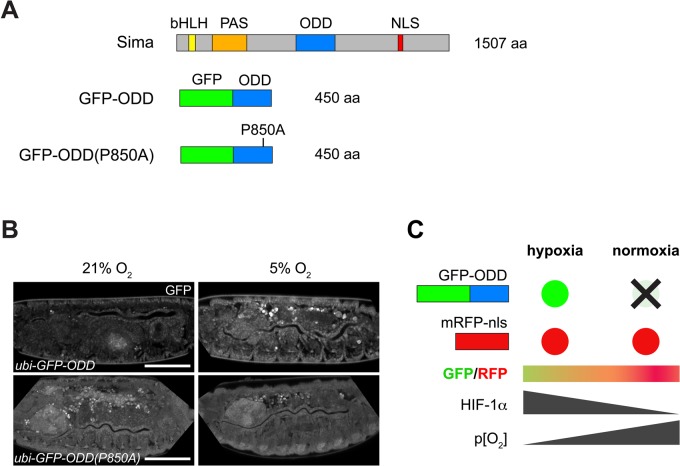Fig. 1.
Construction of an oxygen-sensitive fluorescent protein-based biosensor. (A) Schematic representations of full-length Sima protein (dHIF1-alpha; top), with its O2-dependent degradation domain (ODD; aa 673-895), of the GFP-ODD fusion protein (middle), and of the GFP-ODD construct with the P850 residue mutated into alanine [GFP-ODD(P850A); bottom]. (B) Embryos showing the sensitivity of GFP-ODD to O2 tension. GFP-ODD signals (top panels) were reduced in embryos incubated at 21% O2 compared to embryos incubated at 5% O2. The P850A mutation renders the GFP-ODD construct largely insensitive to changing O2 levels (bottom panels). Scale bar: 100 µm. (C) Schematic representation of the ratiometric sensor design. The red fluorescence from a control protein (mRFP-nls) remains relatively constant under changing O2 concentrations, whereas GFP-ODD is sensitive to O2 levels, providing a measure of the cellular hypoxia response state.

